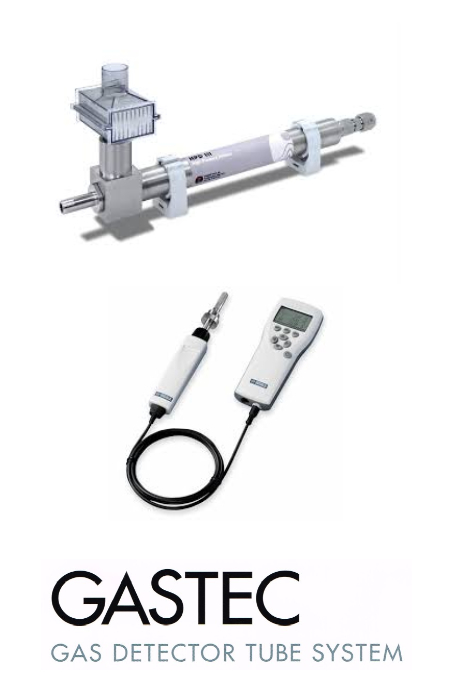
1. Compressed Air / Nitrogen Gas validation
Compressed Air validation is a critical component in the production of pharmaceutical industry and effects on the quality of the end product. The Quality of Compressed air is important to ensure that product is safe.
- Dew Point
- Oil Content
- Particulate matter
- Moisture Content
- Viable Count
The International Standard Organisation sets quality standards for Compressed air as ISO:8573.
Knowing the Potential Risks of Untreated Compressed Air:
Compressed air is not as clean as it appears to be. Untreated compressed air contains many potentially harmful or dangerous contaminants that must be removed or reduced to acceptable levels in order to protect the consumer and provide a safe and cost-effective production facility. Along with moisture and particulate matter, inlet air to a compressor generally carries 5 to 50 bacteria per cfm. A 75-hp compressor with a capacity of 300 scfm therefore takes in 100,000 to 1 million bacteria each hour. These bacteria get compressed along with the air and begin their journey through the compressed air system. Introducing this type of microbial contamination to food products is very risky and would be considered a lack of control by the facility. Understanding how to integrate the treatment of compressed air in a facility will help ward off that risk.

Without proper treatment, contaminants can travel from ambient air all the way through the compressed air system.
IQ,OQ & Performance Qualification
The PQ protocols, as appropriate, will outline a complete sampling and testing plan to demonstrate the ability of the system to reliably produce air, nitrogen, or gas which meets specifications for intended use. Testing will include viable and total particulate counts, dew point, hydrocarbon analysis, and purity analysis. Each point of use will be tested at least three times over 10 working days. Every use point of the system must be tested several times over the course of the study.
- Hydrocarbon Monitoring should show less than 0.2 mg/m3 (25 mg/125 liters) detected. (the lower limit of a Dräger tube)
- The highest total particulate count from the five one-minute runs must meet class 100 or EC Class A criteria.
- Viable Monitoring (not needed of integrity tested final filter is in place) less than 0.03 CFU/ft3 or less than 1 CFU/m3.
- Since the gas is field sampled under non-sterile conditions, a few sporadic, individual, tests may fail. Persistent test failures with any individual test, or group of tests, will indicate a system failure.
- The dew point of compressed air less than or equal to -10°C, or less than the lowest temperature to which the system is exposed.
- Identity and Purity (Nitrogen) Not less than 99.0% nitrogen by volume. Not more than 0.001% Carbon Monoxide. No appreciable odor.
- Identity and Purity (Oxygen) Not less than 99.0% Oxygen by volume. No appreciable odor.
2. Steam Testing
Plant Steam may or may not be classified as a "critical" utility requiring validation. If the steam system is very large, and the critical use of the system is a very minor draw on the system, the system does not need validation. For example, central powerhouse steam on a large plant site, where it is used for building heat and bulk process temperature control, as well as a portion for critical operations, will normally not be validated. On the other hand, if a small boiler is dedicated to process use in a pharmaceutical manufacturing area, and it only serves those processes, it would normally be validated. The distribution system in the critical area will often have an IQ even if the overall system is not validated.
IQ,OQ & PQ Documentation & Acceptance Criteria
| Point of Use Pressure | All use points supply the specified prior to any pressure reducing valves or equipment. |
| Point of Use Supply | All use point supply the volumne of steam required. |
| Peak Load |
Pressure is maintained in the system and in all reduced pressure legs. All peak load equipment operates full cycle and with no alarm conditions for the Plant Steam System or the systems services during maximum anticipated load conditions. All peak load equipment reaches temperatures and pressures in a time consistent with the individual use point study. |
Compressed air validation is performed as per ISO 8573(Compressed Air - Contaminants and purity classes). GAMP Group qualify Compressed air system with respect to contaminants of particles, water and oil and also identifies gaseous and microbiological contaminants.
The list of tests carried out under Compressed Air validation.
- Particle Count using HPD
- Microbial particle count
- Pressure Dew Point test
- Water vapour test (Moisture content)
- Oil Mist
- Odour Test
- Appearance test
- Carbon Dioxide
- Carbon Monoxide
- Nitrogen Monoxide and Nitrogen Dioxide
- Sulphur Dioxide
- Assay content of oxygen
- Nitrogen purity test

Steam Quality Test
Steam quality testing is critical when performing any steam sterilization activity with an air removal step, such as autoclaving equipment.
International regulatory standards such as EN 285, EN 17665 & HTM2010 recommends steam quality testing and has defined parameters for compliance of clean steam. It is defined as the steam whose condensate meets all parameters of WFI. It must meet the basic following physical properties.




 Copyright GAMP Services 2024. All Rights Reserved.
Copyright GAMP Services 2024. All Rights Reserved.